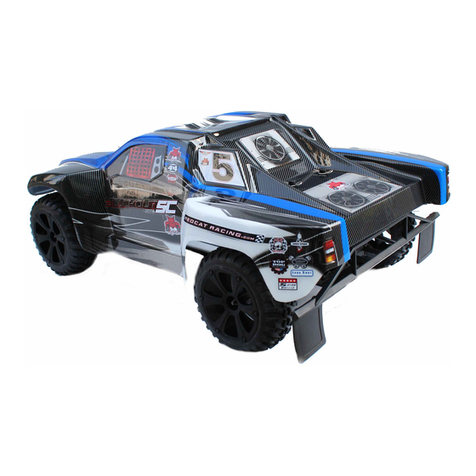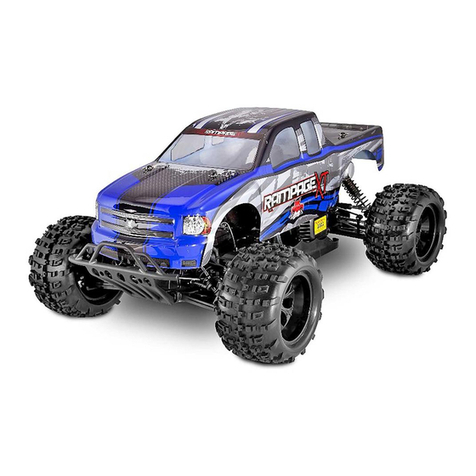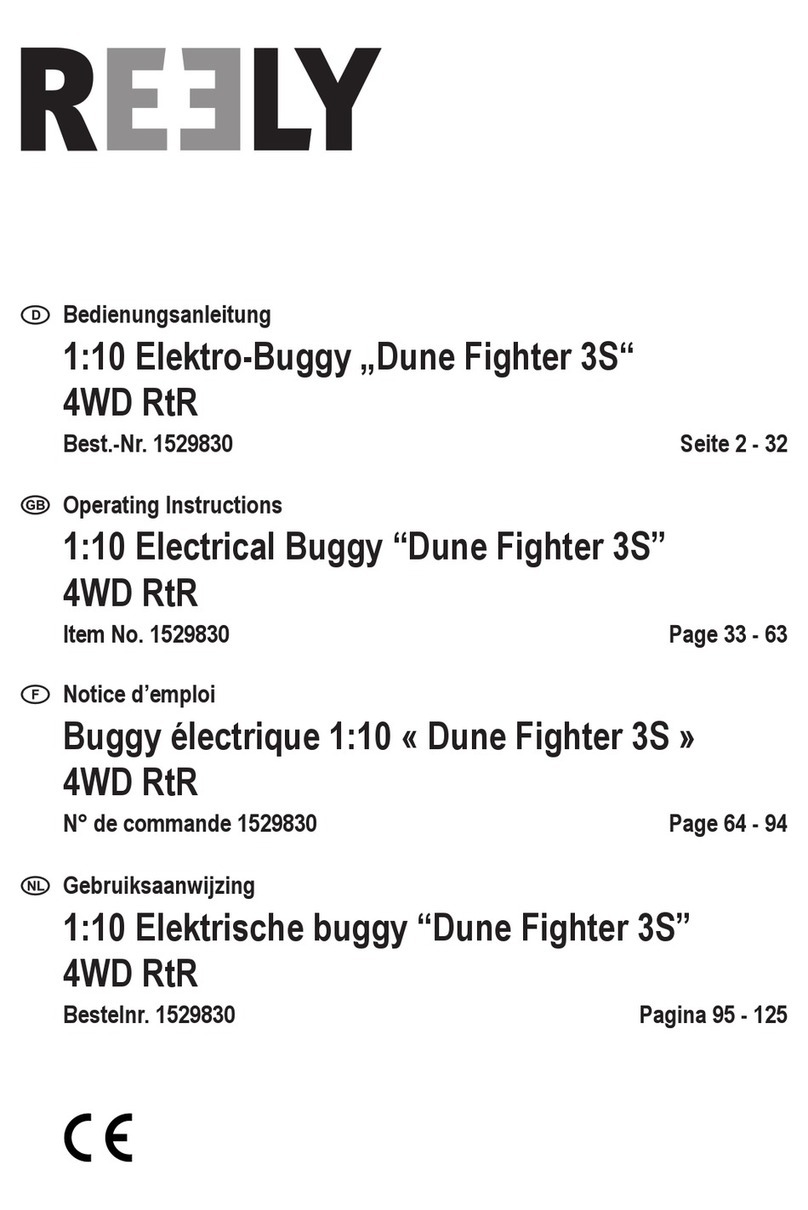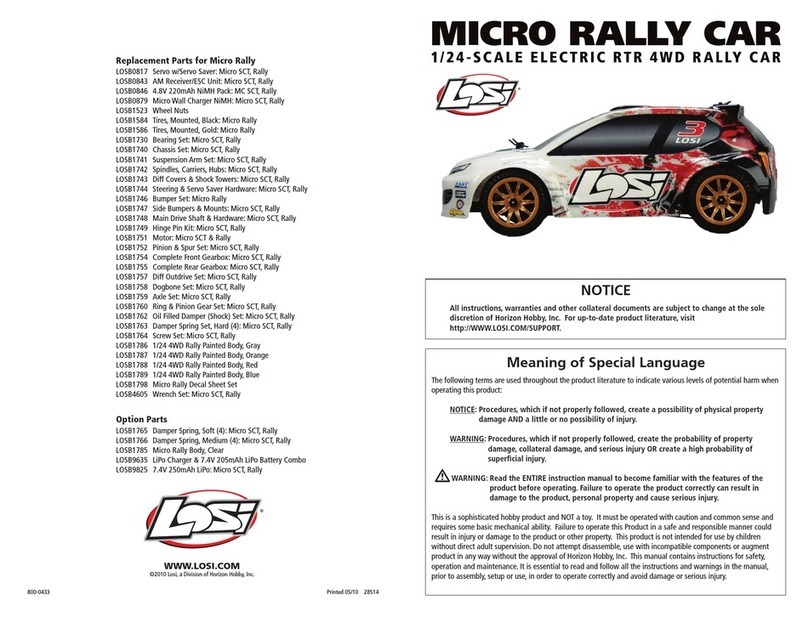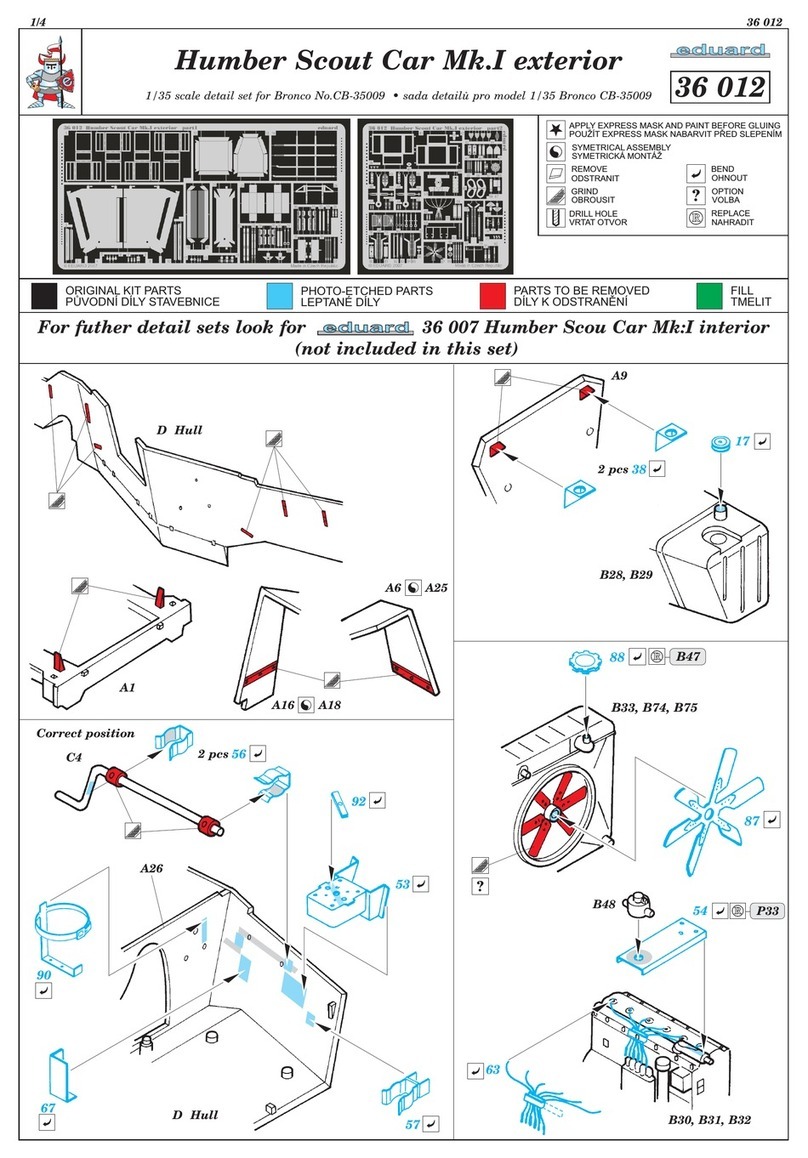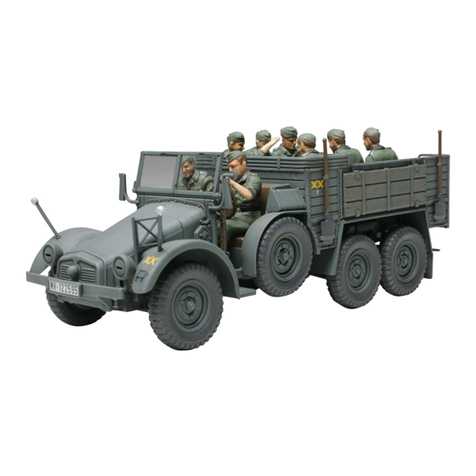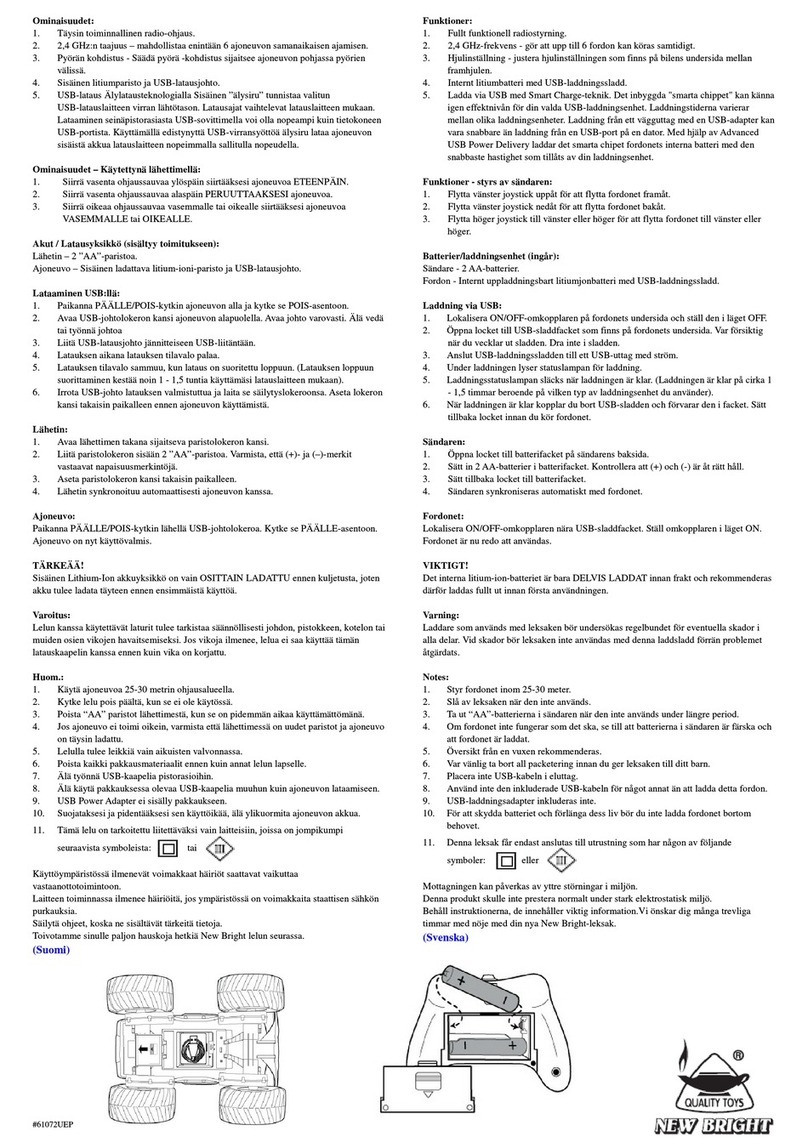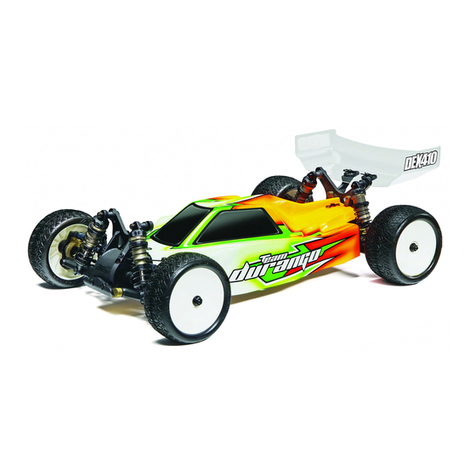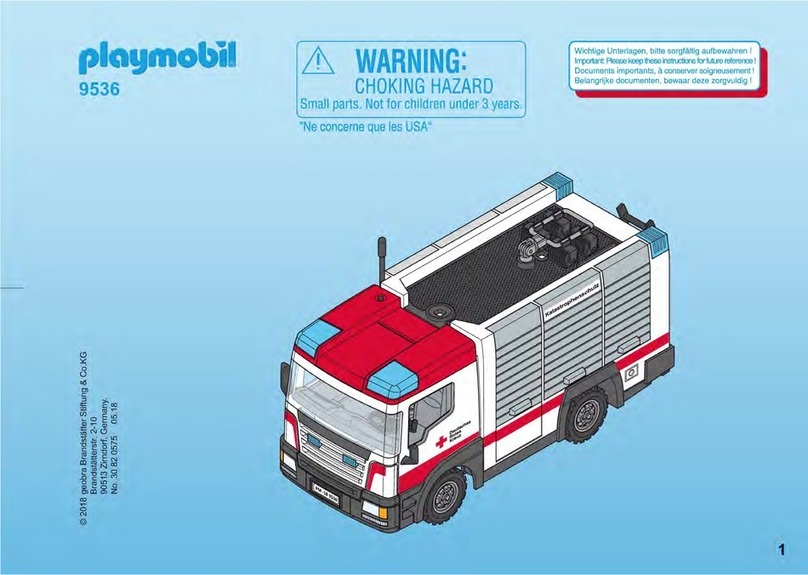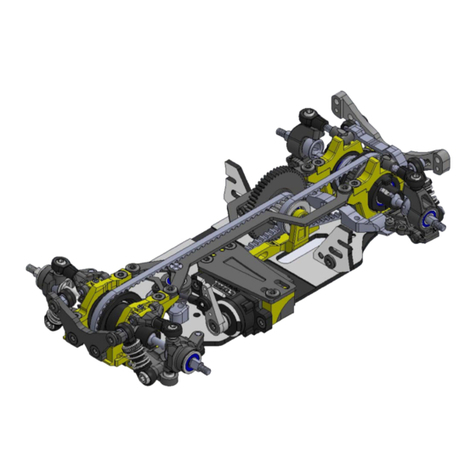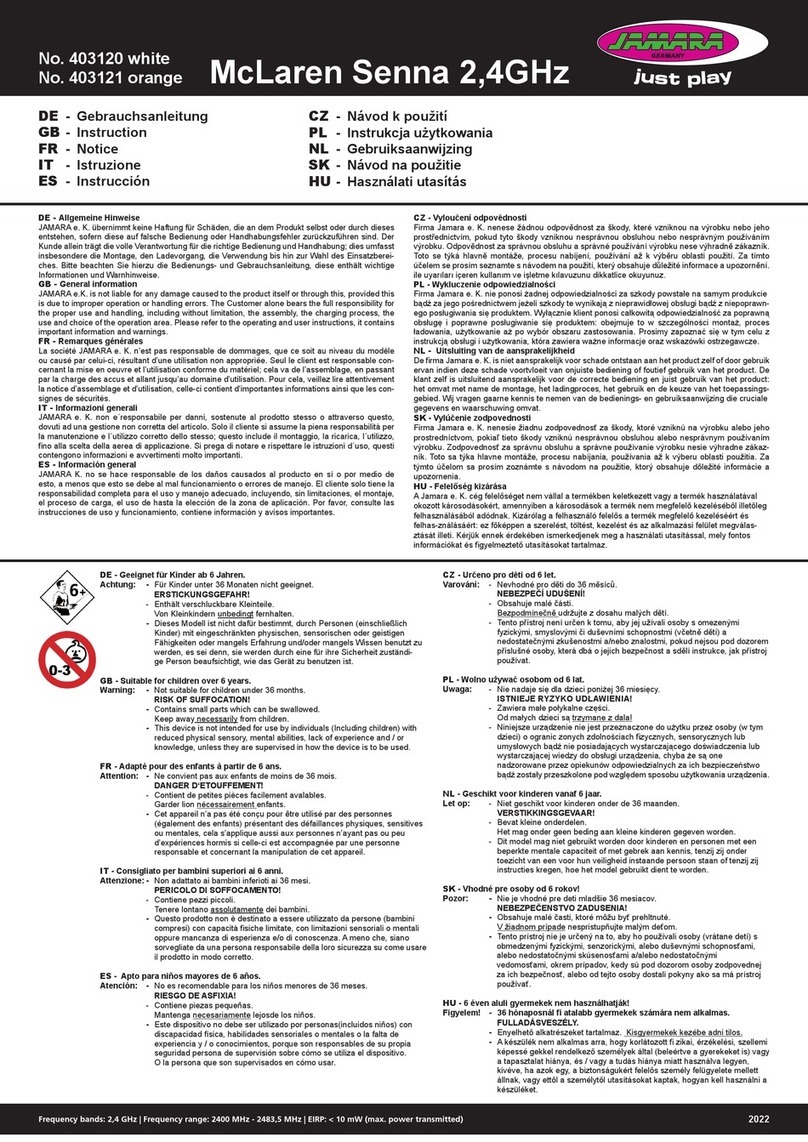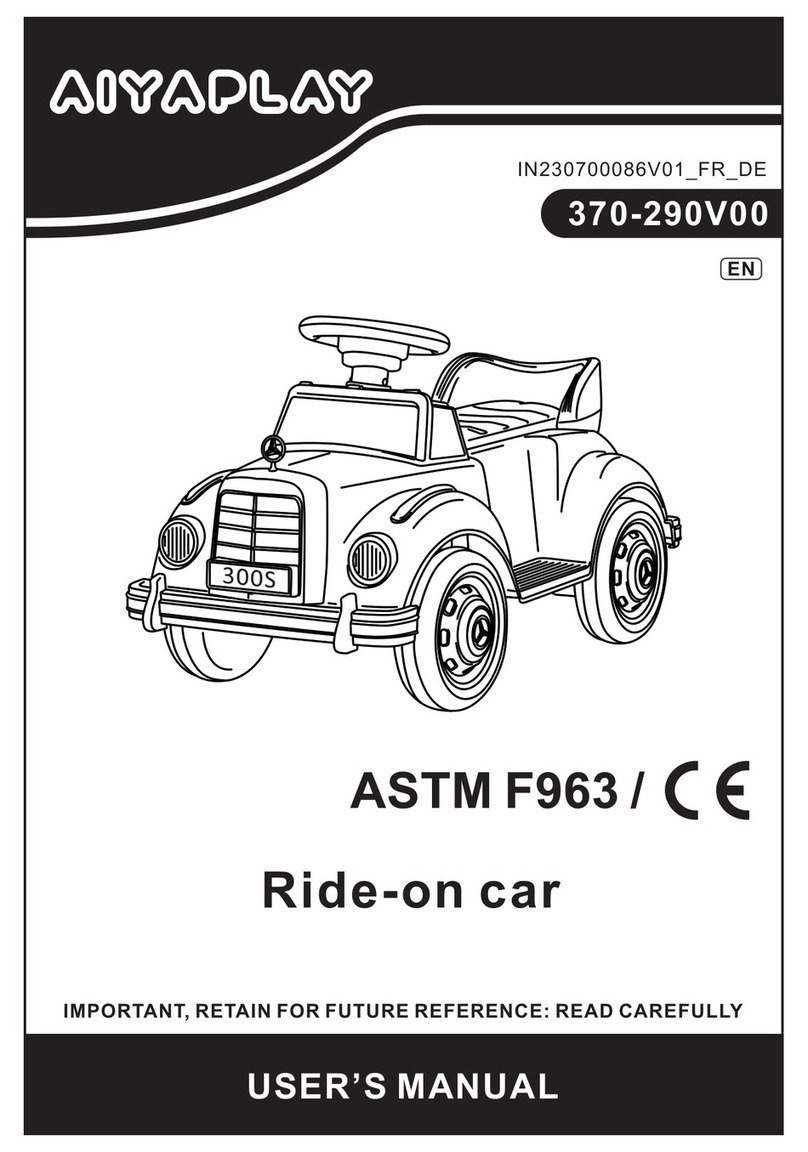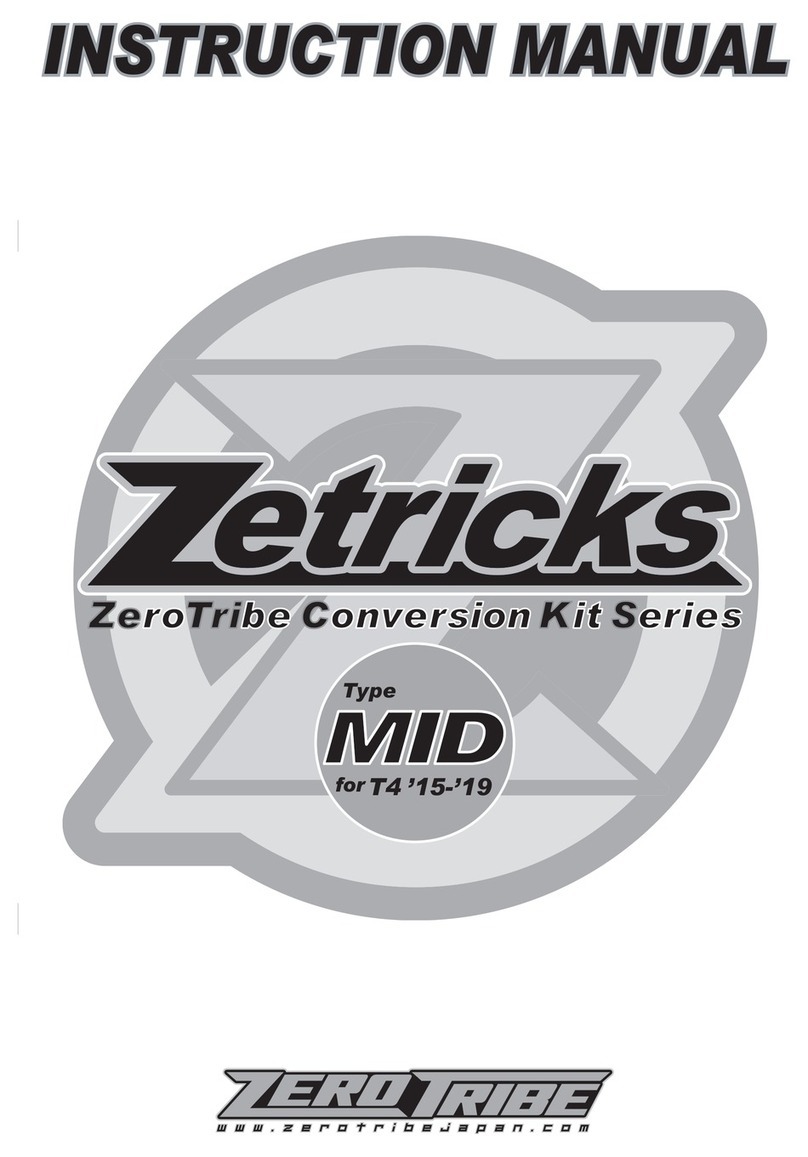
R3C Radio Guide
Powering ON
Binding
Calibration
Powering OFF
1. Unplug the battery pack from the receiver and remove it from the vehicle.
2. Turn off the transmitter.
Note: Always be sure to disconnect the battery pack from the receiver BEFORE turning off the transmitter.
Channel Reverse
This function is used to adjust each channel's direction of movement in relation to its input.
The ST.REV and TH.REV are the reverse switches for CH1 (steering) and CH2 (throttle). If the switch is up,
it indicates the channel is in reverse, and if the switch is down, it indicates the channel is in its normal operating
mode. Example: If the vehicle moves forward while moving the throttle trigger to reverse, flip the TH.REV switch.
Refer to PG.3 of this manual for more information.
Follow the steps below to turn on the transmitter:
1. Check to make sure that the battery is fully charged and installed correctly.
2. Toggle the Power Switch to the ON position, and the R.LED will be solid on.
3. Power on the receiver.
Note: For safety always power on the transmitter before the receiver.
The transmitter and receiver have already been bound at the factory. However if the receiver needs to be
replaced or additional receivers bound follow these steps:
1. Turn on the transmitter while pressing and holding the BIND button, then the transmitter will enter the
binding mode. At this time, the G.LED will start flashing quickly. Once in binding mode release the Bind
button.
2. The receiver will enter the binding mode automatically when powered on.
3. Once binding is successful, the LED of the receiver will flash slowly, and the transmitter LED will remain
solid on after being re-powered on.
Note: When binding, put the transmitter into binding mode first, then the receiver.
Use this function to correct for the mechanical deviation of the throttle trigger and steering wheel, for
example, deviation occurred in the self-centering or maximum minimum travel, the steps are as following:
1. Turn and hold the steering wheel clockwise to the max travel and push the throttle trigger forwards as far
as possible, and at the same time turn on the transmitter, the transmitter will be in calibration mode. The
R.LED and G.LED will work in two-flashing-one-off state repeatedly.
2. Steering Wheel Calibration: Turn the steering wheel to the max and min travel clockwise/counterclockwise
respectively. When calibration is completed, the R.LED will be off.
3. Throttle Trigger Calibration: Push/pull the throttle trigger to forward/backward as far as it will go. When
calibration is completed, the G.LED will be off.
4. Once calibration is complete, press the BIND button to save and exit. The G.LED will be lit solid.
Steering & Throttle Trims
1. The ST.TRIM+ and ST.TRIM- are the trim buttons for centering CH1 (steering), and can be multiplexed as
trims of CH3 and CH4. For multiplexing switching mode, refer to PG.8 “ Mode Switching”.
2. TH.TRIM+ and TH.TRIM- are the trim buttons for centering CH2 (throttle). Adjustment Range: -120us - +
120us, and the step is 4us. Refer to PG.3 of this manual for more information on setting trims.
LED status:
• When pressing the trim keys, the G.LED will flash slowly on short presses and quickly on long presses.
• When the trim adjustment value is at the neutral position, the G.LED will flash twice slowly.
• When the trim adjustment value is at it maximum or minimum setting, the G.LED will not flash at all.
Note: After the throttle trim is changed, the receiver needs to be re-powered on to recognize the new throttle
neutral. Otherwise, an exception may occur during vehicle reversing.
TM
7





